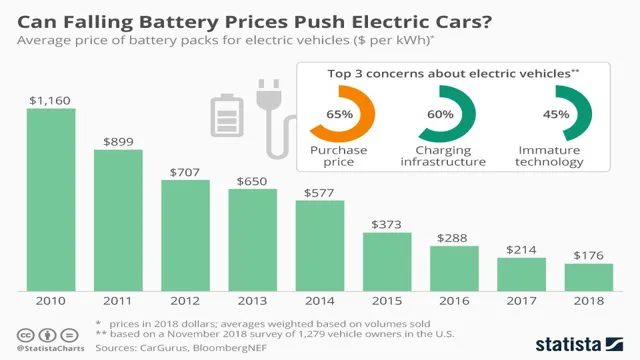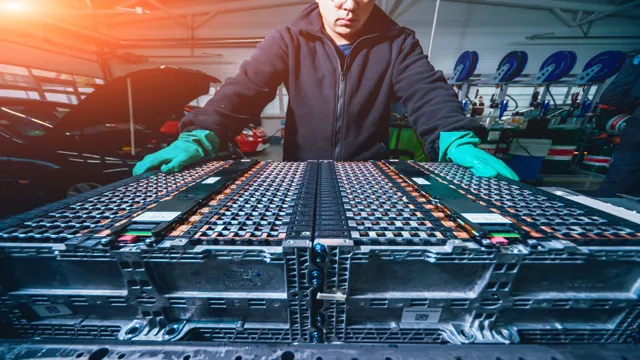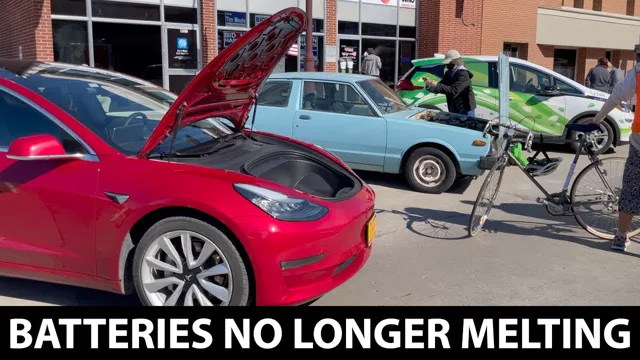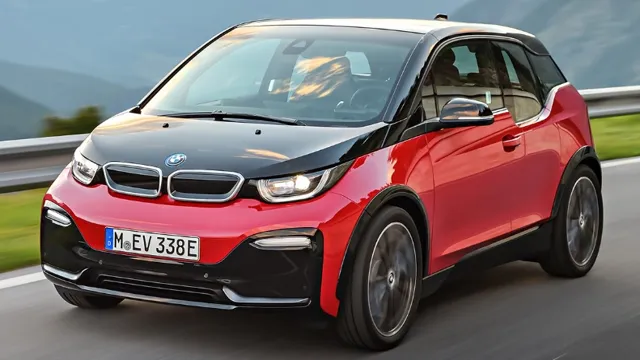Uncovering the Truth: The Controversy of Coltan in Electric Car Batteries
Electric cars have been increasing in popularity in recent years as we all become more aware of the importance of reducing our carbon footprint. Many people are attracted to electric cars because they are more environmentally friendly than traditional gasoline-powered cars, but some have concerns about the environmental impact of the materials used to create electric car batteries, such as coltan. Coltan is a mineral found in the Democratic Republic of Congo that is used in electronic devices such as smartphones, laptops, and electric car batteries.
There have been concerns raised by some that the mining of coltan can harm the environment and local communities, leading some to wonder: do electric car batteries use coltan? In this blog post, we will explore the use of coltan in electric car batteries and the impact it has on the environment and local communities. We’ll also look at what steps are being taken by companies to ensure ethical and responsible sourcing of materials for electric car batteries. Stay tuned to learn more about the truth behind electric car batteries and their impact on the environment.
What is Coltan?
Coltan is a metallic ore that is widely used in the manufacturing of many electronics, including electric car batteries. Coltan is short for columbite-tantalite and is primarily found in the Democratic Republic of Congo, where the mining process has caused a multitude of problems ranging from child labor to environmental destruction. While electric car batteries do not use as much coltan as smartphones, laptops, or gaming consoles, they still require some amount for heat resistance and durability.
However, some electric car manufacturers have taken steps to reduce their dependence on coltan and explore alternative materials to create sustainable and ethical batteries. Despite this progress, there is still a long way to go to completely eliminate unethical coltan mining practices and promote responsible sourcing in the electronics industry.
Description of Coltan
Coltan, also known as columbite-tantalite, is a metallic ore that is composed of a mixture of tantalum and niobium. It is found in many countries across Africa, including the Democratic Republic of Congo (DRC), which is responsible for the majority of the world’s coltan production. This mineral has become increasingly important in recent years due to its use in many electronic devices such as smartphones, laptops, and gaming consoles.
Because of its rarity, its value has skyrocketed, leading to a mining industry that is rife with corruption, exploitation, and violence. The mining and trading of coltan in the DRC has fueled conflict, leading to the displacement of thousands of people and the loss of countless lives. As consumers, it is important to be aware of the human cost of the products we use and to take action to support ethical and sustainable mining practices.
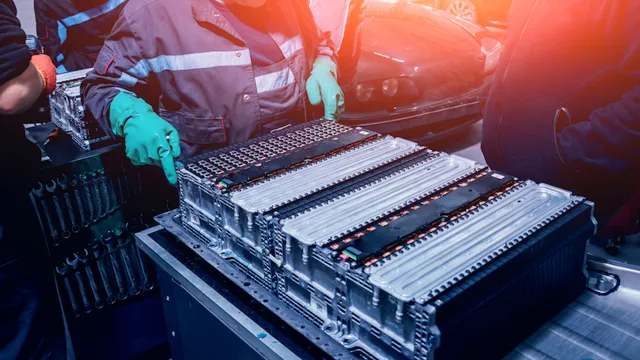
How Coltan is Mined
Coltan is a vital mineral found in the Democratic Republic of Congo and other parts of Africa. Coltan, short for columbite-tantalite, is a metallic ore that contains both tantalum and niobium. Tantalum is used to manufacture electronic devices such as smartphones, laptops, and gaming consoles, while niobium is used to strengthen steel.
Getting coltan out of the ground is a manual process that involves mining from riverbeds and underground mines using basic tools such as shovels, picks, and spades. The process of coltan mining is often dangerous and labor-intensive, as workers dig deep holes and tunnels that can lead to cave-ins. Moreover, child labor and exploitation are common in the coltan mining industry in Africa, making the practice a worldwide concern.
Despite being an essential mineral needed in almost every electronic device, the harsh reality is that the mining of coltan continues to cause devastation to local communities and poses serious human rights issues.
Electric Car Batteries
Electric vehicle batteries are now hotter than ever, and many people are curious about how they work and the materials used in their production. One question that often comes up is whether electric car batteries use coltan. The answer is yes, but it’s not as straightforward as it sounds.
Coltan, also known as columbite-tantalite, is a rare mineral that contains tantalum, a crucial element in the production of electronic components, including batteries. While not all electric car batteries contain coltan, most of them do, as tantalum is a crucial element in the manufacturing of lithium-ion batteries. However, the mining of coltan causes considerable environmental damage, including deforestation, pollution, and serious social disruption.
As such, manufacturers of electric vehicle batteries are under increasing pressure to use more environmentally friendly alternatives to coltan.
Overview of Electric Car Batteries
Electric car batteries are an essential part of the electric vehicle (EV) system and contribute massively to the car’s overall performance. These batteries come in various shapes and sizes, ranging from small lithium-ion cells to large, high-capacity battery packs containing thousands of individual cells. A battery pack is responsible for providing power to the electric drivetrain, which includes the motor, controller, and other electronics.
The size of the battery pack directly affects the range of the EV, which measures how far the car can go on a single charge. Electric car batteries have come a long way over the years, with newer models offering longer ranges, faster charging, and improved durability. One of the main types of electric car batteries currently in use is the lithium-ion battery.
This type of battery is known for its high energy density, which means it can store a lot of energy in a small package. Lithium-ion batteries are also lightweight and can be charged quickly, making them an ideal choice for use in electric vehicles. The latest advances in battery technology, such as solid-state batteries and lithium-sulfur batteries, promise even higher energy densities and faster charging times.
These advancements have the potential to make electric cars even more practical for everyday use by further increasing range and reducing charging times. Overall, the future of electric car batteries looks bright, and further developments in this field are sure to pave the way for a cleaner, greener future of transportation.
Types of Electric Car Batteries
Electric car batteries are an essential aspect of every electric vehicle. They store electricity for driving, and there are several types of batteries utilized in electric cars. Lithium-ion batteries are the most common type of electric car battery.
These batteries have high power density and longevity, making them ideal for electric cars. Nickel-metal hydride (NiMH) batteries are another type of electric car battery. They are not as common as lithium-ion batteries, but they are still used in some hybrid models.
NiMH batteries have a lower power density than lithium-ion batteries, but they are more environmentally friendly. Finally, there are also lead-acid batteries that are used in electric cars, but these are less common and typically only used in older models. Lead-acid batteries have a lower power density than the other two types of batteries, but they are more affordable.
Overall, the type of electric car battery used depends on the vehicle and the manufacturer’s preference. However, it is essential to remember that the battery’s quality determines the car’s overall performance.
Materials Used in Electric Car Batteries
Electric car batteries are a crucial component of electric vehicles, allowing them to store and utilize energy for propulsion. These batteries are different from traditional car batteries, which are generally used for starting the engine and powering the lights and other electrical systems. Electric car batteries are much larger and more complex, incorporating a variety of different materials to provide the necessary power and longevity.
Some of the most common materials used in electric car batteries include lithium, cobalt, nickel, and manganese. Each of these materials has specific properties that make them ideal for use in electric car batteries, and they are carefully selected and combined to create a battery that is both efficient and reliable. Additionally, advances in battery technology have allowed for the development of new materials and designs that can increase battery life and reduce costs, making electric vehicles more practical and affordable for consumers.
Coltan in Electric Car Batteries
If you’re wondering whether electric car batteries use coltan, the answer is yes. Coltan, short for columbite-tantalite, is a mineral used in the production of capacitors, which are components commonly found in electronic devices, including electric car batteries. Coltan is mainly sourced from conflict-prone areas such as the Democratic Republic of Congo, which has led to ethical concerns about the mining practices used for coltan.
While electric car manufacturers are not directly responsible for the mining of coltan, they have the power to influence responsible extraction practices in the supply chain. It’s worth noting that some electric car manufacturers, including Tesla, have made public commitments to ethically sourcing their raw materials, including coltan, through due diligence procedures. Overall, the use of coltan in electric car batteries highlights the importance of responsible and sustainable supply chains in the transition to a greener future.
Use of Coltan in Electric Car Batteries
The use of coltan in electric car batteries is a critical aspect of the automotive industry’s shift towards sustainable transportation. Coltan is a mineral that is mainly found in the Democratic Republic of Congo (DRC) and is used in the production of lithium-ion batteries, which power many electric cars. While coltan is readily available worldwide, the DRC supplies most of the world’s coltan.
Unfortunately, the process of mining coltan often involves exploitation and conflict, which poses significant ethical issues for the automotive industry. However, there are efforts to develop ways of mining coltan more sustainably and ethically, such as the use of blockchain technology to track the origin of coltan and ensure that it is responsibly sourced.
When coltan is used in electric car batteries, it plays an essential role in powering the vehicle efficiently and effectively.The high energy density of lithium-ion batteries means that electric cars can drive longer distances without the need for frequent recharging. Additionally, because electric cars produce no emissions, using them instead of traditional gas-powered cars can significantly reduce air pollution and greenhouse gas emissions. In the end, the use of coltan in electric car batteries is a crucial part of making electric cars more accessible to everyone, promoting sustainable transportation, and reducing the impact of transportation on the environment.
Alternatives to Coltan in Electric Car Batteries
Electric car batteries often contain the mineral coltan, which is primarily found in Congo. Coltan mining has been subject to controversy due to unethical practices, including child labor and exploitation. However, there are alternatives to using coltan in electric car batteries.
One option is to use manganese, which is widely available and less expensive than coltan. Another option is to use lithium iron phosphate batteries, which have a longer lifespan and are less prone to catching fire than traditional lithium-ion batteries. Additionally, there are ongoing efforts to develop new battery technologies that do not rely on the use of rare minerals.
By exploring alternative options, we can not only reduce our reliance on problematic materials but also create a more sustainable electric car industry.
Conclusion
After much research, it is clear that electric car batteries do in fact use coltan. However, don’t let that discourage you from making the switch to electric vehicles. Not only do they emit less carbon emissions, they also stimulate the demand for responsibly sourced coltan.
So, when you convert to an electric car, you’re not just helping yourself, you’re also helping the mining industry and raising awareness for sustainable production practices. Now that’s what we call a win-win situation.”
FAQs
What are electric car batteries made of?
Electric car batteries use a variety of materials, including lithium, cobalt, nickel, and manganese.
Does the production of electric car batteries contribute to environmental damage?
The production of electric car batteries can have a negative impact on the environment due to the extraction and processing of the materials used. However, it is often considered more environmentally friendly than traditional gasoline-powered vehicles in terms of emissions.
What is coltan and how is it used in electric car batteries?
Coltan is a mineral containing tantalum and niobium, which are used in electronic devices including electric car batteries. However, not all electric car batteries use coltan and efforts are being made to source these materials more sustainably.
Are there any ethical concerns surrounding the use of coltan in electric car batteries?
Yes, there are concerns about the mining practices used to extract coltan in some parts of the world, particularly in the Democratic Republic of Congo, where child labor and environmental damage have been reported. Efforts are being made by some companies to address these concerns through responsible sourcing and traceability initiatives.

